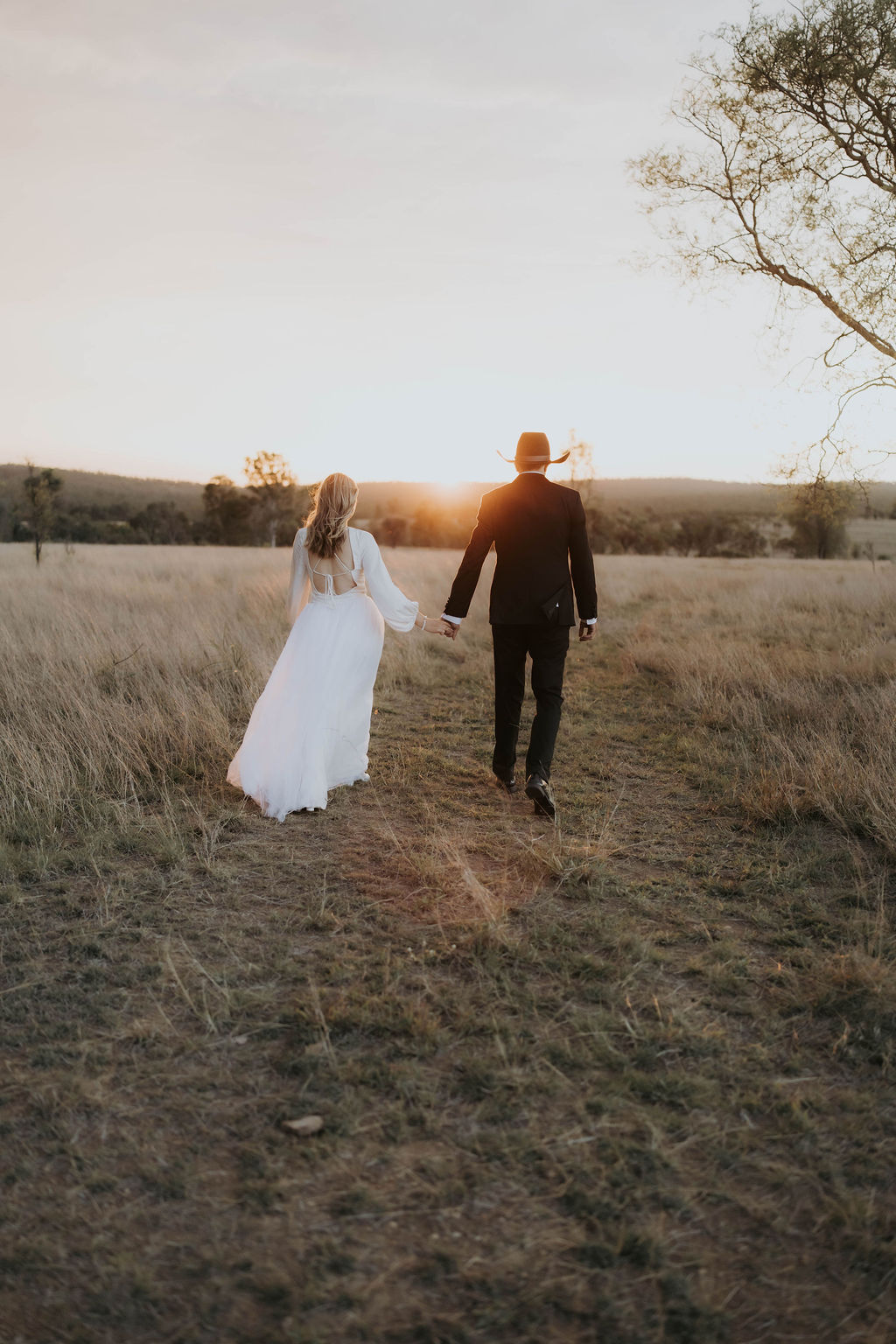Claire Austen started the Gin Gin Garden Club after she moved to Trangie.
PHOTOGRAPHY NATALIE SALLOUM
Sign up to our mailing list for the best stories delivered to your inbox.
As she prepares for the warm days ahead, Claire Austin wonders how she'll feel when the time comes to leave her beloved garden behind.
INTERVIEWS CLAIRE AUSTEN PHOTOGRAPHY NATALIE SALLOUM
My husband’s family haven’t owned Gin Gin station for long. It was purchased six months before James and I were married, eight years ago. But there seem to be connections to Gin Gin everywhere we go. I’ve had people come up to me at the local footy field or the pub to tell me stories of their family’s ownership. I’ve even had people who follow the Garden Club on Instagram tell me of their connection to Gin Gin station and send me images. But it was only last year that I finally saw images of the homestead in its original form.
The previous owners who showed me these photographs had renovated the house about 20 years ago and it was great to learn a little more about my home from them.
Without a long history at Gin Gin, I feel less restricted with what I can do in the garden. No-one notices if I’ve pruned the roses too hard or if I remove a yellow box tree from the garden perimeter.
After our family purchased the property, we decided that we would live in the house. I’ve always loved old places, so I was excited to move in to our new home. A small amount of work was done on the house — mainly fixing the cracks in the 130-year-old rammed-earth walls and updating the kitchen. We lifted lino that had been put down almost 80 years ago and found treasure between the lino and floorboards — newspapers and magazines published in 1948.
The first year we focused on the house, not the garden. We wanted to get the preparation of the garden right, which we knew would take time. The original garden was lost, and we were lucky that we could pretty much start from scratch. We also didn’t have the history and connection to the garden, so were able to remove what we didn’t want. Unfortunately, there were two beautiful old jacaranda trees that died in the first couple of years — I have no idea why; it may have been the bore water, or they could have just been too wet. It was very sad to lose them; they were our oldest established trees and one of the only plants that had survived all the previous owners and gardeners. But for now, what I don’t have in established trees, I make up for in freedom. I would hate to be responsible for losing those trees in a garden that had been in my family for generations.
Gardens can play such a large role in people’s lives. I love that every garden has a story, a journey. They evolve and change, especially the ones that have been tended by many generations of the same family; those who must navigate the delicate balance of keeping the previous family occupants happy, but still making the garden their own.
My garden is my creative outlet. So what happens if the next generation living in the house don’t share my love of gardening? Or don’t realise just how much blood, sweat and tears went into getting it established? The new custodians might not have a similar connection, but I guess that’s all part of the journey.
SUMMER TO DO LIST
1. Mulch
To keep moisture in and weeds out. It keeps plants cool, increases organic matter in the soil and reduces moisture loss.
2. Water
Give areas a good soaking once a week over summer, plus more if needed. I have bore water, so I use drippers on my garden beds.
3. Deadhead
Deadhead roses and spring flowers. This promotes new growth. Expect new roses in six weeks.
4. Plant
Now is the time to plant dahlia tubers as the soil warms in November. This year I’m adding ‘Café au Lait’ to the perennial garden. Finish off plantings before summer heats up.
5. Vegetables
Plant beans, eggplant, sweet corn, cucumber, tomatoes, zucchini. Succession plant to ensure continued supply.
6. Colour
Plant sunflowers, cosmos, zinnias and marigolds in the veggie patch to attract bees.
Claire Austin runs the Gin Gin Garden Club.
To hear more extraordinary stories about women living in rural and regional Australia, listen to our podcast, Life on the Land, on Apple Podcasts, Spotify and all major podcast platforms.

What began as a postcard-perfect country wedding soon became a story of survival, strength, and the unshakable heart of rural Australia.

Current custodian Penny Lamont says the heritage garden is designed for easy-care and dry times.